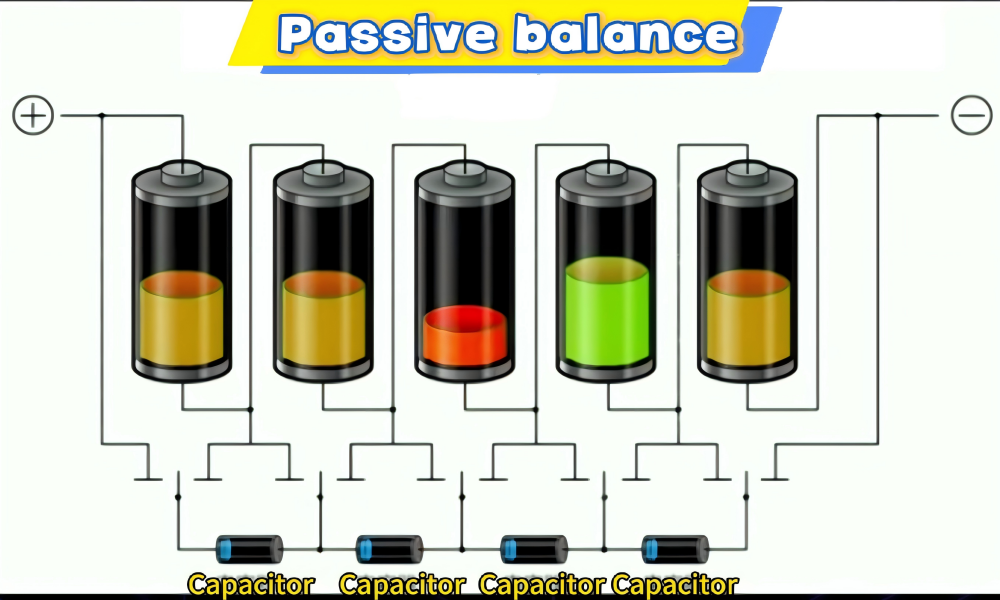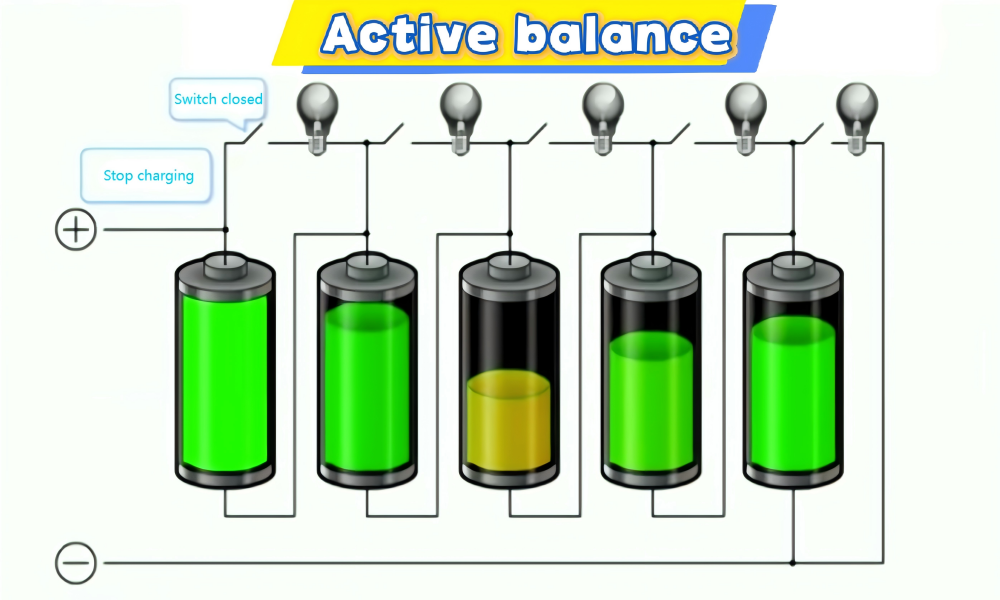Interpretation of BMS active balancing and passive balancing! Understand why battery balancing is so important.
Many friends asked me, hey Enya,what is the difference between active and passive balancing of BMS? This seems to be a simple question, but I found that many people still cannot really understand and choose. Today I want to share video with you.
1.First of all, the first question is, why do batteries need to be balanced?
Here we look at these three seriesof batteries in an ideal state. We use these two dotted lines to represent the safe voltage range of the battery. Because they are connected in series, in an ideal state, the voltage increase of these three seriesof batteries when charging is the same, but the actual situation is different. Due to the difference in capacity and voltage value, the second serieswill be fully charged in advance and reach the safe voltage value. At this time, if you continue to charge, the second serieswill be overcharged and may damaged battery. In order to prevent the second seriesfrom being overcharged, the first and third seriescan also be fully charged. At this time, the principle of balanced consistency appears. The balancing is divided into two balancing methods: passive balancing and active balancing.
2.Second, let's take a look at what is passive balancing, what is active balancing, and what are the advantages and disadvantages:
Passive balancing releases the excess energy of high-capacity batteries in the form of heat energy through resistance energy consumption, so that the voltage of all single cells tends to be consistent. The core is to identify the battery status through the voltage detection module, control the on and off of the resistor through the switch, and force the high-voltage battery to discharge. Technical features:
(1) Simple structure, only requires resistors, switches and basic control circuits;
(2) Low cost, suitable for low-cost scenarios;
(3) Energy is wasted in the form of heat energy, and the system efficiency is reduced
Active Balancing: Active balancing transfers the energy of high-capacity batteries to low-capacity batteries through energy transfer technology to achieve energy recycling. Typical solutions include inductive, capacitive or DC-DC converter topologies, and achieve directional energy flow through power electronic devices. Technical features:
(1) High energy utilization and reduced heat loss;
(2) High balancing efficiency (up to more than 90%);
(3) Supports complex topologies and adapts to multi-seriesbattery pack management;
(3) High cost, requires integration of high-frequency power electronic components.
3.Third: How should we choose BMS active balancing and passive balancing?
At the 15th Battery Exhibition held in Shenzhen, China last week, I communicated with many BMS manufacturers. They always believe that the premise of choosing active or passive balancing must be to determine what battery cell to use. If you choose a , the effects of active and passive are the same, so under the premise of cost, of course, passive balancing is chosen. If you choose a brand B battery cell, or a battery cell brand with poor consistency, you really need to choose an active balancing BMS to increase the balancing efficiency, because if you choose a poor battery cell, you will have to increase other costs to run the battery system.
So have I made it clear about BMS active and passive balancing? If you still have questions, please send them to me in the comment area!
 +86 13332949210
+86 13332949210 info@xihobattery.com
info@xihobattery.com







 Xiho
Xiho May 26 2025
May 26 2025












